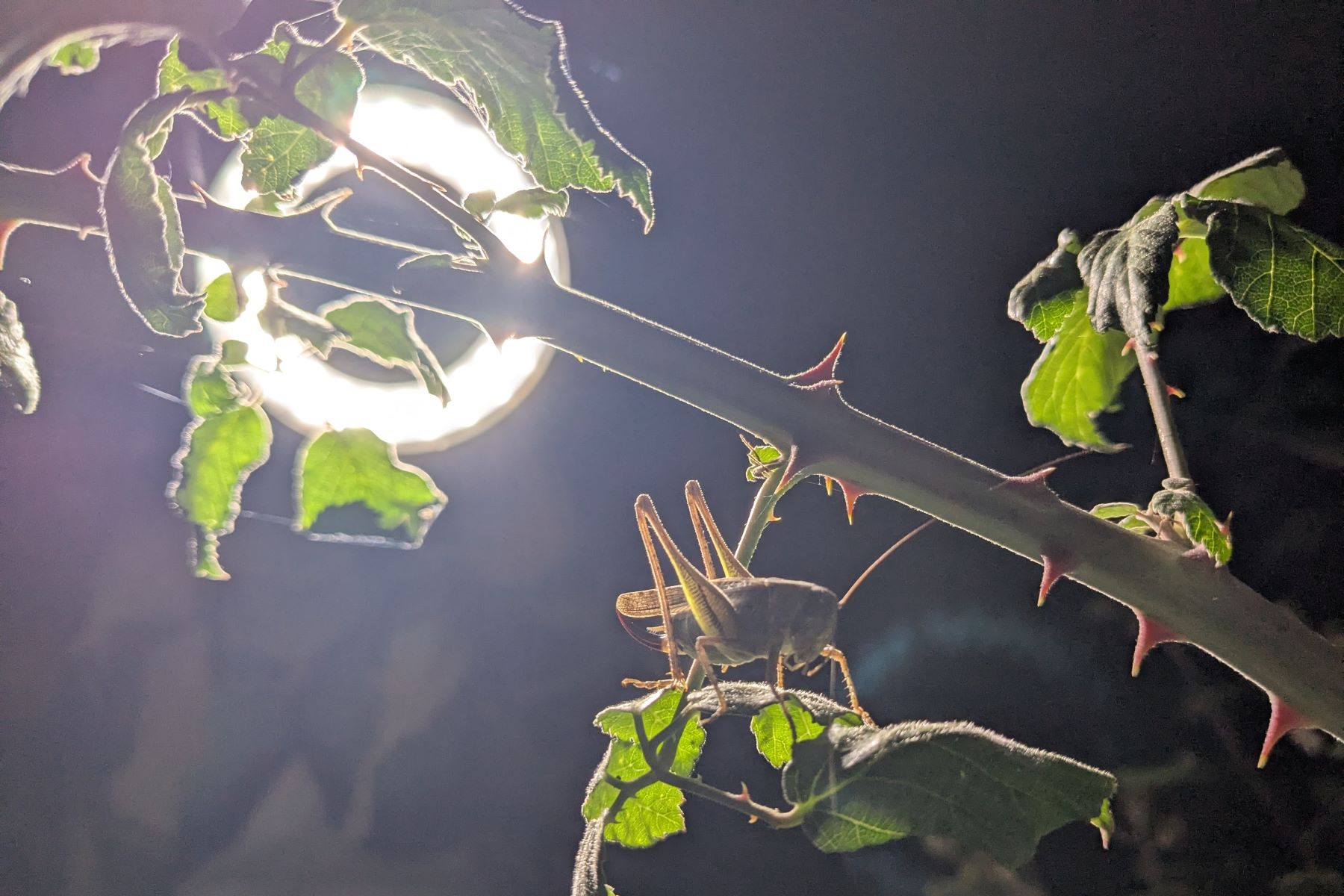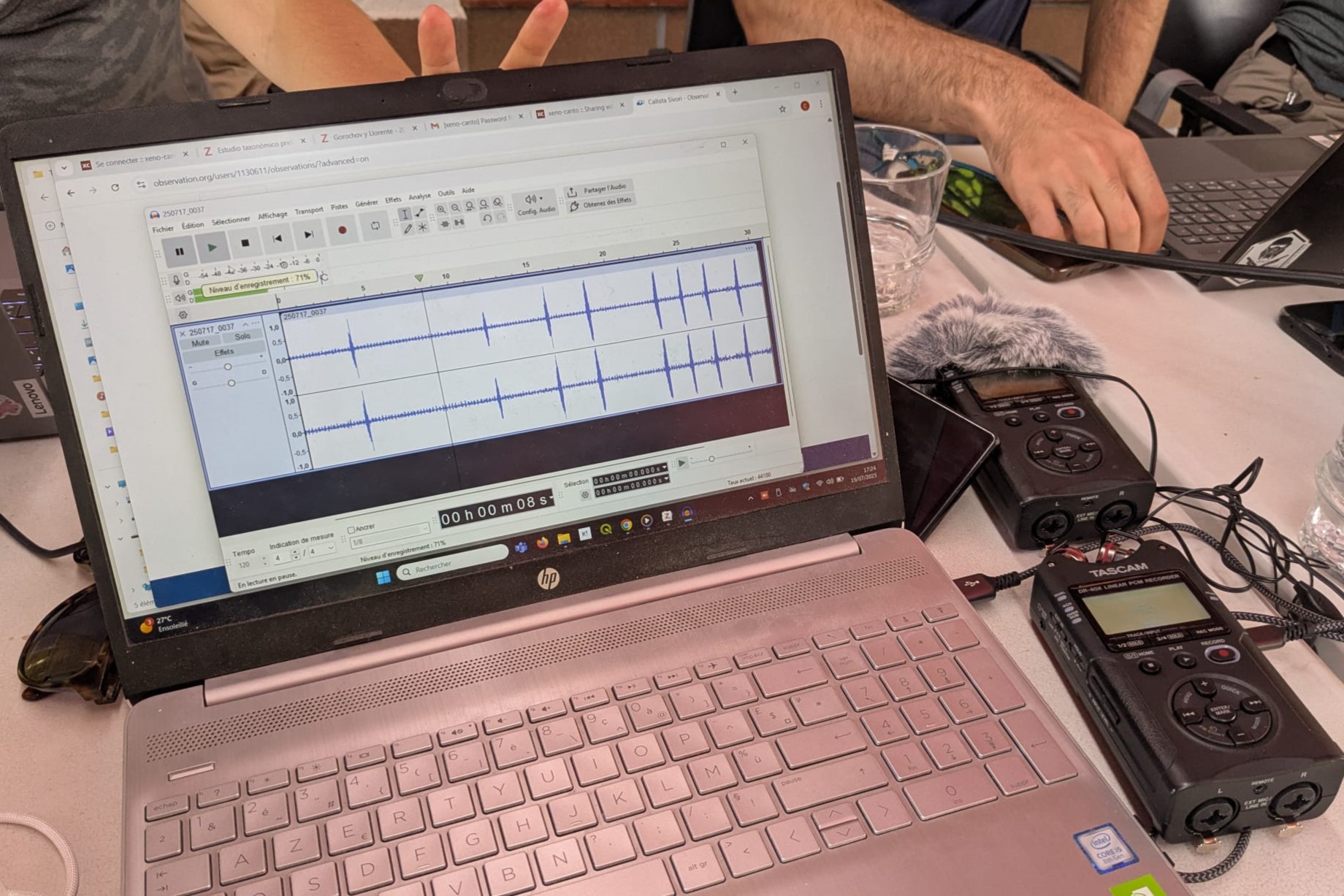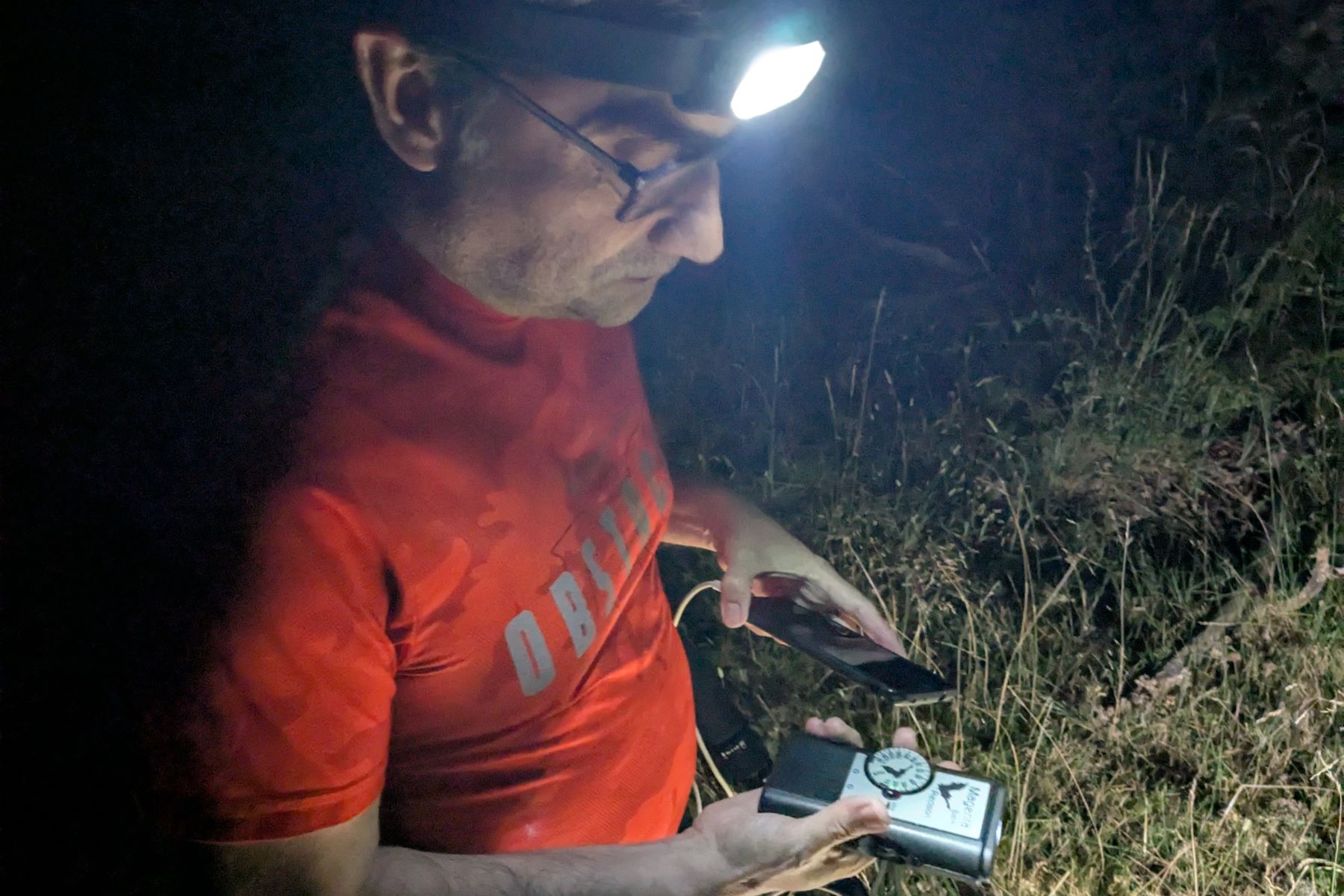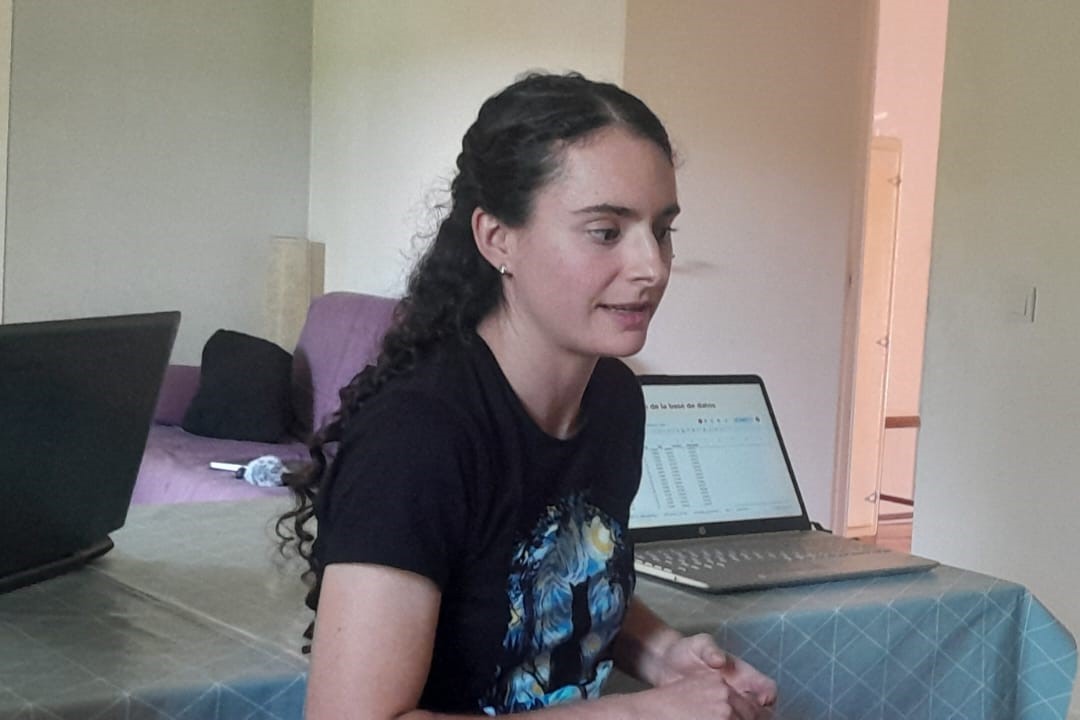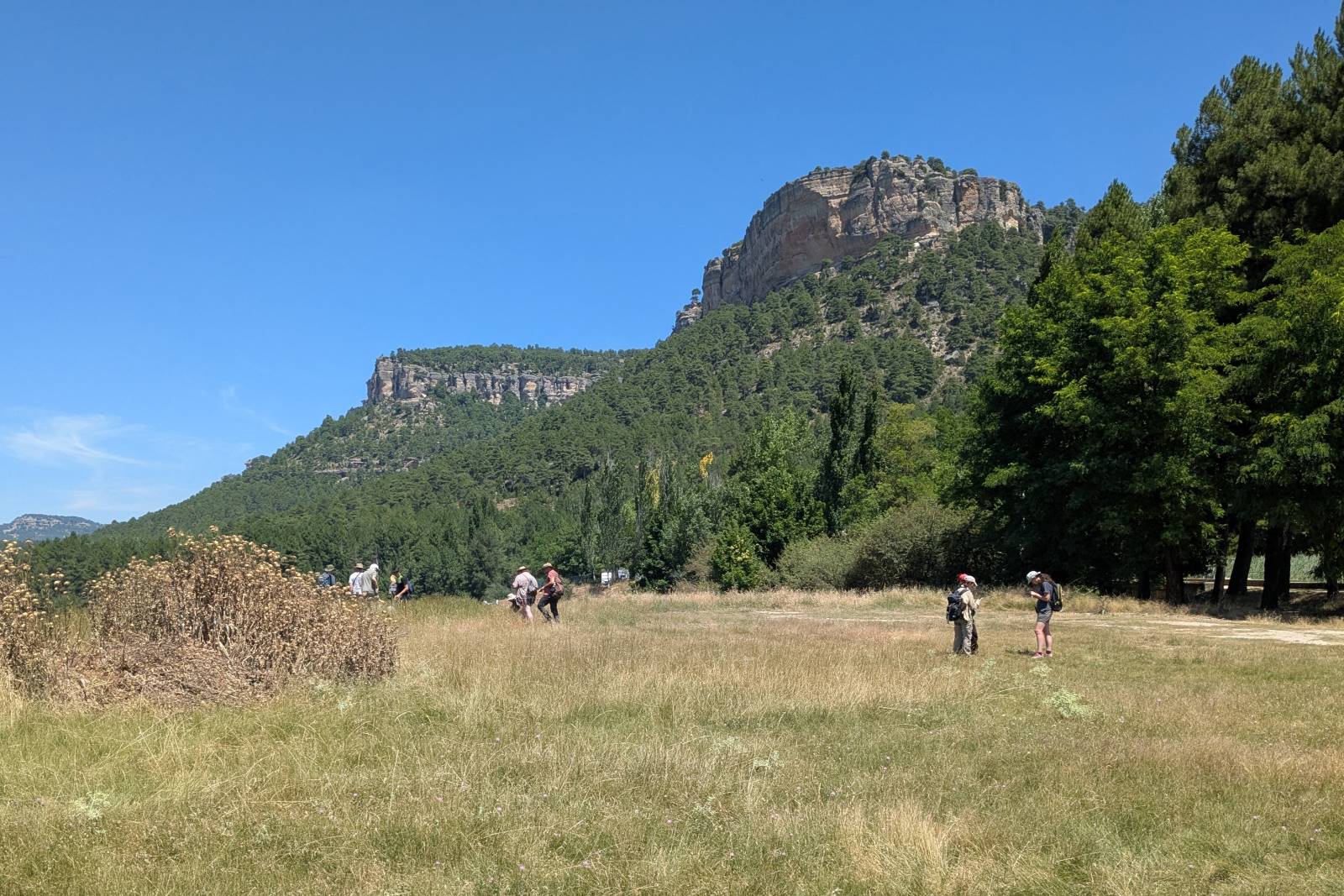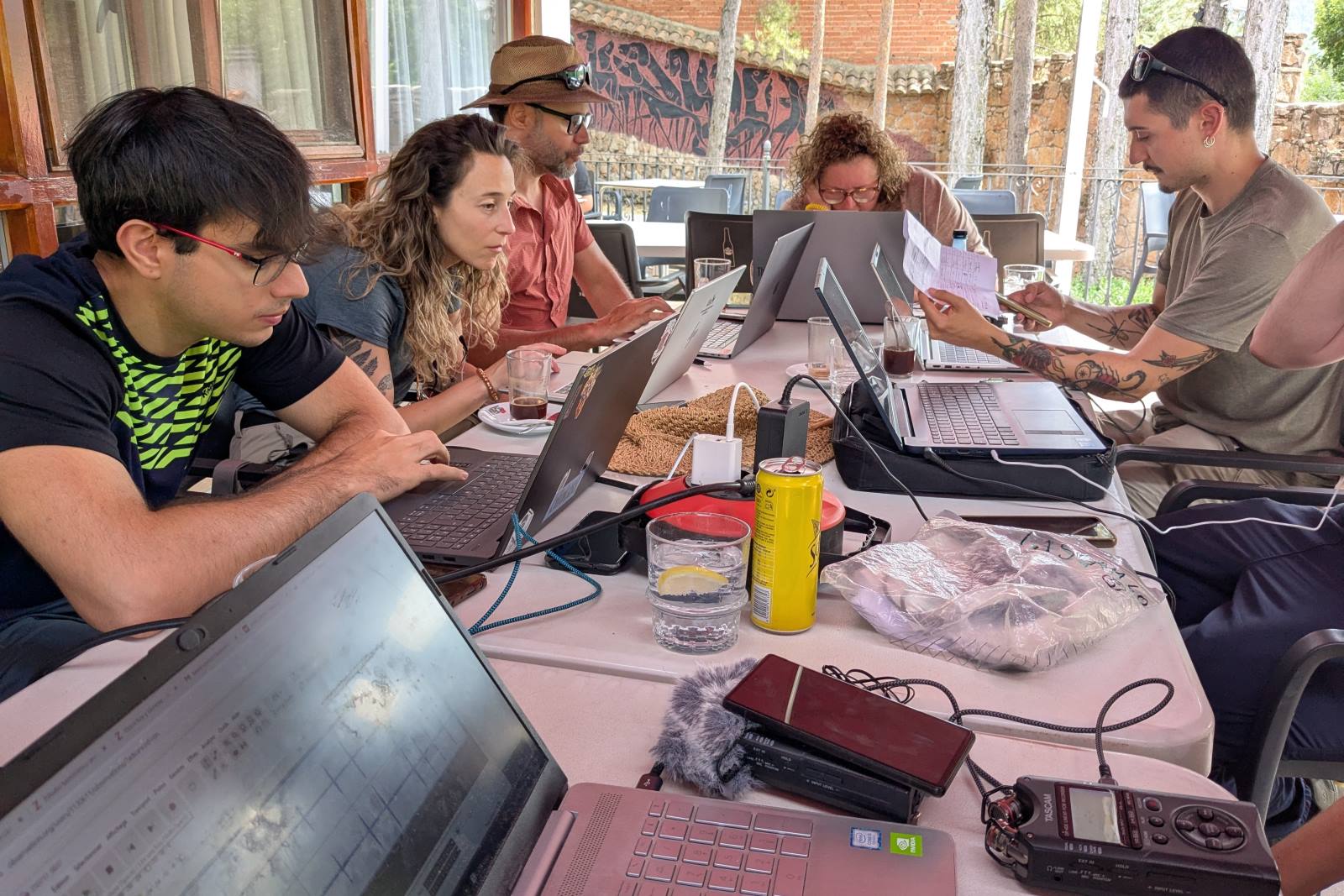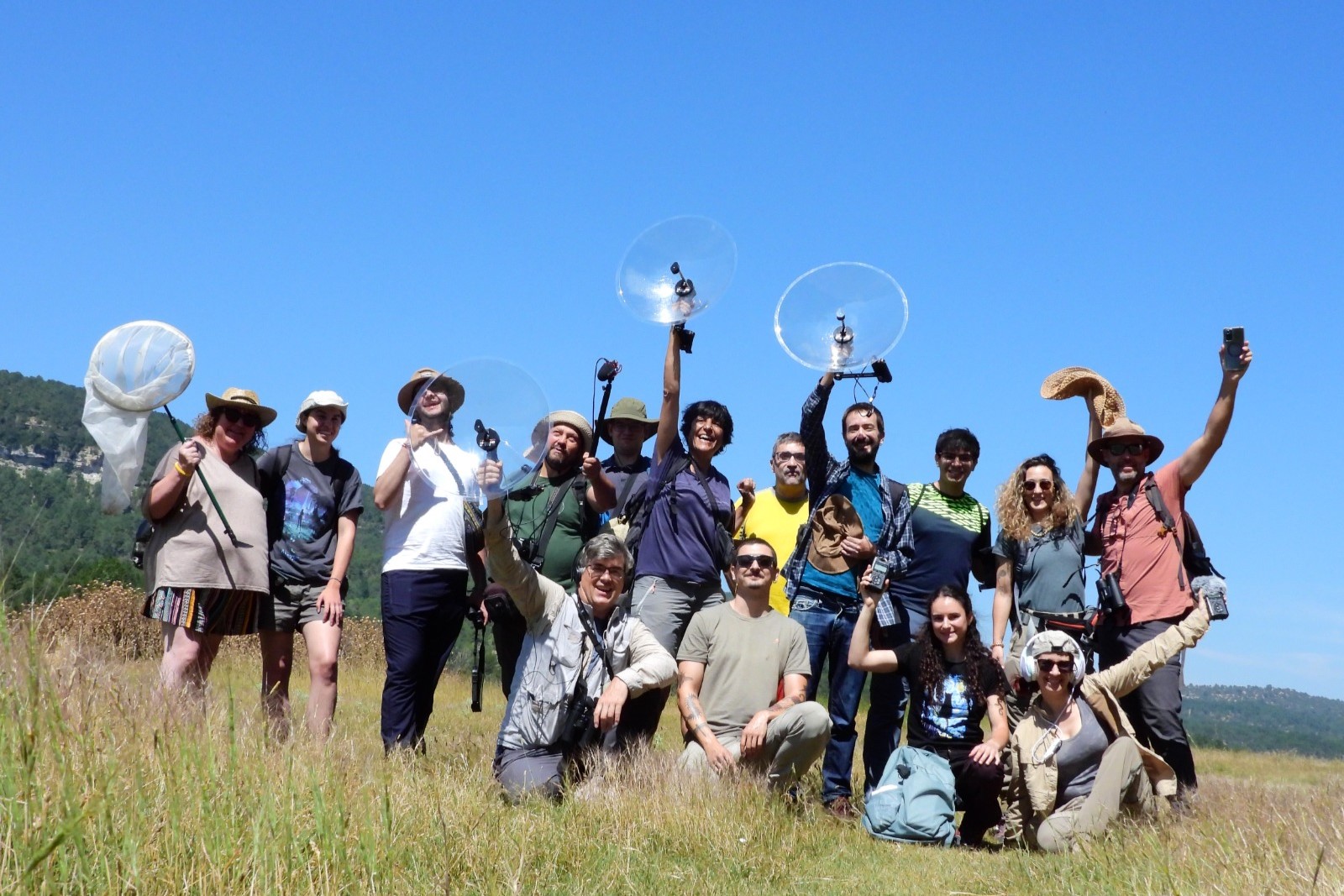We organized this second introductory workshop on orthopteran bioacoustics, taught in Spanish, continuing our efforts to grow the community of interested Spanish speakers. This time, we visited the Cuenca mountain range. We enjoyed pleasant temperatures and the presence of Iberian endemic species, perfect conditions for the successful TEOSS 3 Workshop.
We were a good group of 15 people from all over Spain (Madrid, the Balearic Islands, Galicia, Cuenca, Zamora, Toledo, Huesca, etc.), missing our Portuguese colleagues, whom we’re sure to meet up with at a reunion soon. We followed a training program, dedicating a lot of time to the field, acquiring a minimum level of knowledge, and concluding the workshop with the recordings identified and uploaded to the Xeno Canto server. It was a pleasure to meet with such a motivated and hardworking group. Alternating fieldwork, theory, and sampling is undoubtedly the best pedagogy for learning about ecology and species; it’s known as Learn by Doing. We believe that the positive atmosphere and group dynamics motivate amateur biologists to participate in citizen science projects.
Day 1. Reception
Afternoon reception at the El Cerviñuelo rural hostel, near Las Majadas (Cuenca province). This former forester’s lodge is quite imposing and comfortably accommodates groups seeking tranquility and a well-preserved Mediterranean forest at an altitude of 1,400 meters. In addition to our sheep and cow neighbors, we immediately enjoyed the wildlife, including a very vocal midwife toad (Alytes obstreticans) and the ocellated lizards that inhabit the nearby rocks.
Our first nighttime outing allows us to visually inspect the surroundings and detect the most abundant orthopterans, which we will study in the following days. The nighttime atmosphere is rich with the soft cooing of the European nightjar (Caprimulgus caprimulgus), the subtle barking of common frogs (Pelophylax perezi), and the melodious song of the crickets Oecanthus pellucens, so typical of our summer nights. The star species was Albarracinia zapateri, which we were able to observe at leisure. This large insect with bulging eyes draws attention due to its intense green body color, which contrasts with its straw-colored tegmina.
Day 2. Los Cuchareros / Fuente de la Tía Perra
10:00-11:00. An introduction to the TEOSS project, its objectives, and methodology. We highlight the importance of the Iberian Peninsula in the European context and the need to expand basic knowledge about many of its species. Microphones will be distributed to attendees.
11:00-15:00. We take our first steps, equipped and ready to record the stridulations of the orthopterans we encounter along the way. We explore the area around the Tía Perra spring, with a stream of water where odonates and the magnificent Chorthippus jucundus abound. The grasshopper density was quite moderate, although the grasses were not yet dry in the higher reaches of the mountain range. Cicadas abound among the pines and saturate the sound environment, although they allow us to make some recordings.
6:00-9:00 PM. We begin the afternoon with a spectacular video of A. zapateri copulation recorded the night before. The Ephippigerinae are notable for their peculiar biology: the males of this group mate by passing through a large whitish structure that preserves sperm. The female then separates from the male, carrying this “spermatophore,” which she may carry attached to her body for hours, as fertilization takes a long time. Most surprisingly, the female feeds on the spermatophore, which turns out to be little more than a nuptial gift, facilitating the maturation of the eggs, which requires a great deal of energy.
This will be followed by talks on the biology and acoustics of orthopterans; the use of the Observation.org platform to collect field data; and the data collection sheet that helps organize sampling concepts.
10:00 PM – 3:00 AM. We explore the surroundings of the forest lodge again until late at night. Orthoptera are abundant, and we record Oecanthus, Albacarrinia, Eugryllodes, Platycleis, Thyreonotus, Tettigonia… After familiarizing ourselves with the use of recording equipment during the day, we can concentrate on approach and recording techniques.
Day 3. Los Altos de Las Majadas
We changed our surroundings and spent the morning sampling the low scrub and sparse terrain around the Las Majadas campsite. The habitats were completely different, as was the insect community. We also discovered new species of Orthoptera: Lluciapmaresius, Chorthippus, Omocestus minutissimus, and several others.
6:00 PM – 9:00 PM. Back at the hostel, we continue with talks on Orthoptera. Olga Fernández and Callista Sivori present their ongoing work on developing databases for TEOSS and on the distribution of crickets in Spain. We review several case studies (Gryllus, Oecanthus) and the application of bioacoustic techniques to understand Orthoptera. José Ramón Correas then reviews the species sighted during the day, with photos taken in the field, and explains essential morphological elements for identifying grasshoppers. We conclude the theoretical section with a demonstration of echometers, ultrasound recorders that can be attached directly to a mobile phone.
10:30 PM – 1:30 AM. We switched to using ultrasound detectors to explore the forest. They revealed the richness of ultrasonic patterns of the Ensifera, obviously beyond our hearing range. The Ephippigerida aerolaria stands out, having been very discreet until now. The placement of a light trap allowed us to see a large number of moths, although no orthopterans came to the light.
Day 4. Laguna de Uña
The last day begins. It takes us to Uña Lagoon, where we search for new species. A meadow allows us to review the Chorthippus, although the wind and the inherent difficulty of recording in these environments make it clear that recording Acrididae songs requires a lot of patience and dedication.
The perilagoon belt disappointed us with the lack of hygrophilous species at the time of our visit, although we were rewarded by the detection of the rare cricket of the genus Petaloptila.
After the picnic and a deliciously fresh watermelon, we headed to a restaurant to set up our unique Internet Café. The lab session begins, which will take us until 7:00 PM. We’ll be processing all the data collected so far: synchronizing the observation data from the app to the Observation.org user account; downloading and renaming the sound files; importing the data into Audacity to process the files; and finally, uploading this information and files to the Xeno Canto platform.
Day 5. Farewell
With homework done, the end of the workshop offers a time for discussion and the exchange of diverse experiences… These conversations take us on a journey through the American jungles, the Galician rivers and their rampage, the Iberian moors and their extreme temperatures… and many more topics: everyone contributes. Finally, we bid farewell and promise to see each other again in the near future.
_
This project has received funding from the European Union’s Horizon Europe Research and Innovation programme within the framework of the TETTRIs Project funded under Grant Agreement Nr 101081903.


Funded by the European Union. Views and opinions expressed are however those of the author(s) only and do not necessarily reflect those of the European Union or REA. Neither the European Union nor REA can be held responsible for them.


